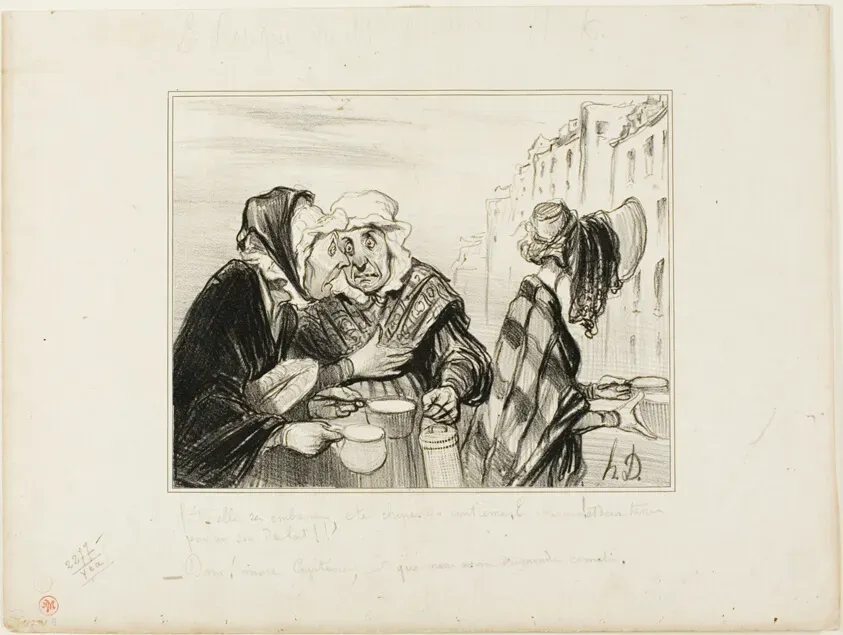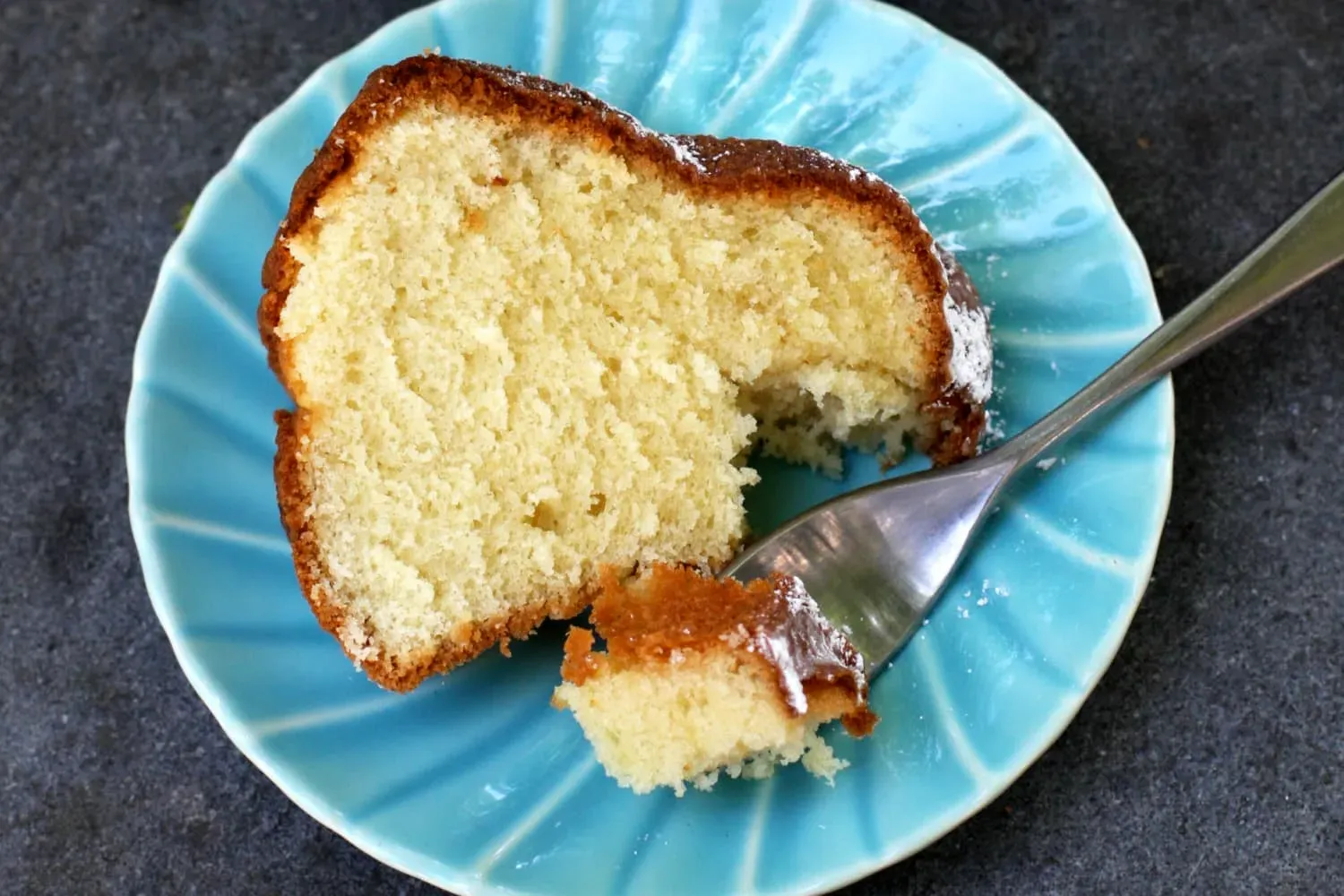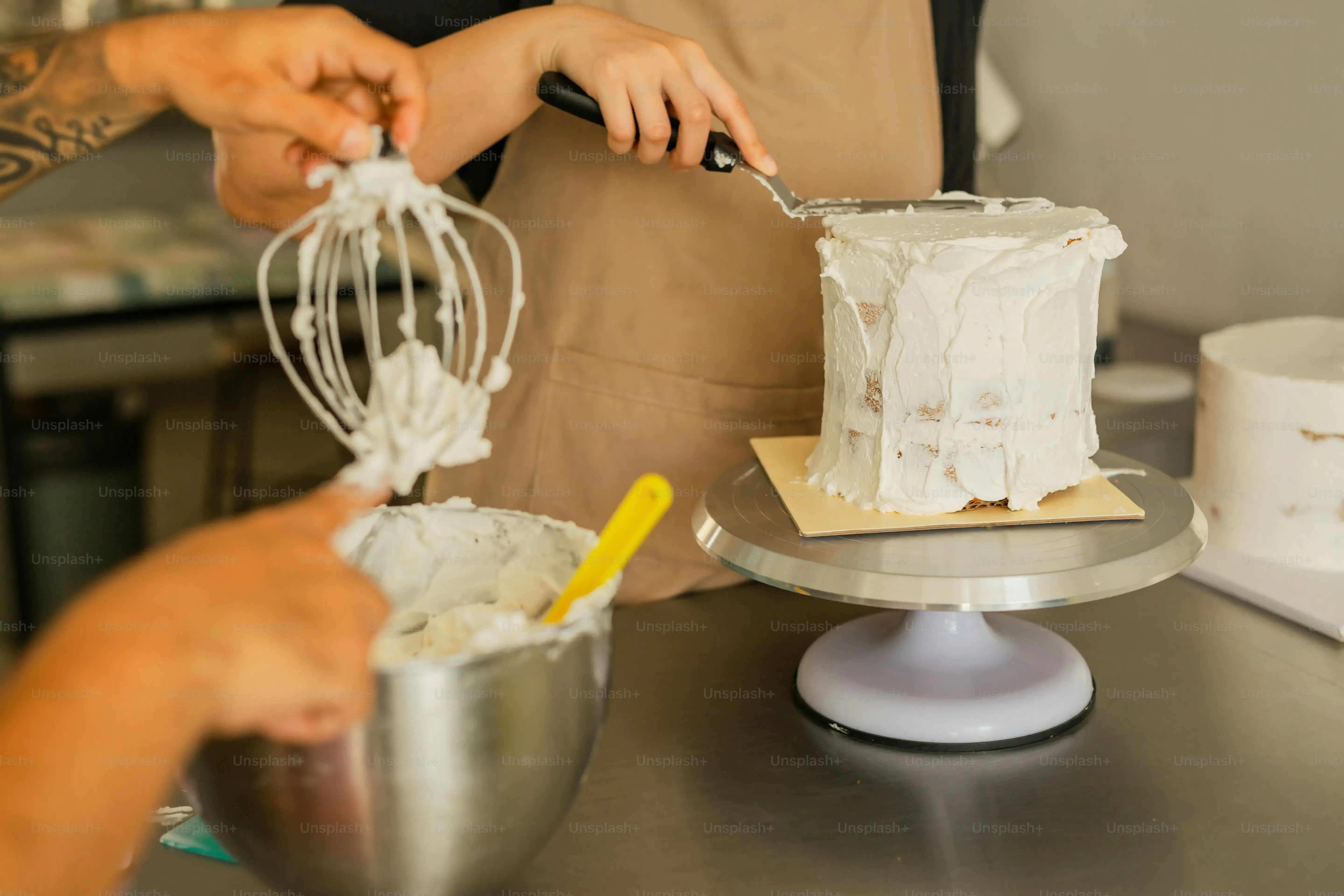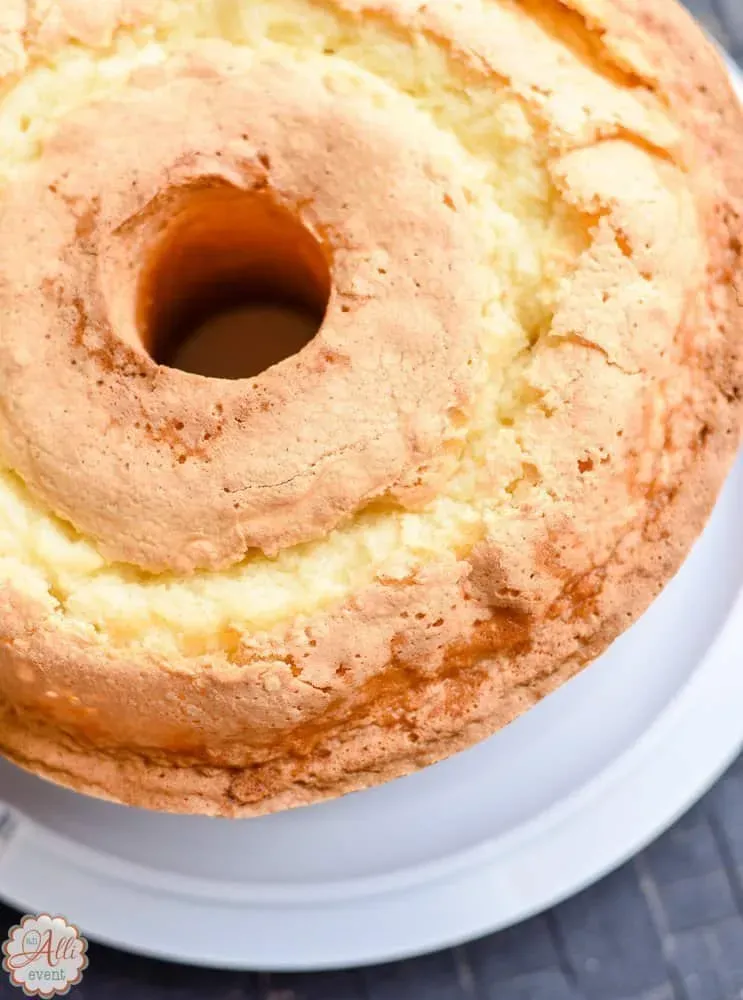Table of Contents
A truly great pound cake is a thing of beauty. Dense, buttery, with that signature crackly crust and a moist, tender crumb. It’s the kind of cake that stands on its own, needing little more than a fork, though a dollop of whipped cream or a handful of berries never hurts. You might think tackling something this classic means hours slaving away or needing a culinary degree. Forget that. Learning how to make a sour cream pound cake from scratch is actually quite straightforward, requiring patience more than complex technique. We're going to break down the process step-by-step, cutting through any intimidation factor. This guide will walk you through gathering the right ingredients and equipment, mixing the batter correctly, achieving that perfect bake, and finally, how to serve and keep your creation fresh. By the time you're done, you'll have the skills to bake this timeless dessert whenever the craving strikes. Let’s get baking.
Why Make a Sour Cream Pound Cake From Scratch?

Why Make a Sour Cream Pound Cake From Scratch?
Beyond the Box: Real Flavor, Real Control
Look, grabbing a box mix is easy. Nobody's arguing with that. But if you want a pound cake that actually tastes like something more than sweetened air and chemicals, you gotta go scratch. Why make a sour cream pound cake from scratch? Because you control every single ingredient. You use real butter, not some questionable vegetable oil blend. You pick the vanilla extract – pure, not imitation. This isn't just about being a kitchen purist; it's about flavor. A cake from scratch has depth. It has richness. It tastes like someone put actual effort into it, not like it rolled off an assembly line.
Texture Talk: That Perfect Crumb and Crust
Beyond the ingredients, there's the texture. Box mixes often give you something spongy or crumbly. A proper sour cream pound cake from scratch, however, delivers that dense, moist crumb that defines the classic. The sour cream isn't just there for tang; its fat and acidity work magic on the gluten, keeping the cake tender and incredibly moist, even days later. And that crust? When you bake it right, it gets this slightly crisp, golden-brown exterior that's the perfect contrast to the soft interior. You just don't get that kind of structural integrity and delicious contrast from a mix.
- You control ingredients for superior flavor.
- Achieve the signature dense, moist crumb.
- Get that desirable crisp crust.
- Experience the satisfaction of baking a classic.
- Avoid artificial flavors and preservatives common in mixes.
Gathering Ingredients and Gear: How to Make a Sour Cream Pound Cake From Scratch

Gathering Ingredients and Gear: How to Make a Sour Cream Pound Cake From Scratch
Quality Ingredients Make the Difference
Alright, let’s talk supplies. You can’t build a sturdy house with flimsy materials, and you can’t bake a killer pound cake with sad ingredients. First up, butter. Use unsalted, high-quality butter. This isn't the time for margarine or spread. Butter provides flavor and structure. Make sure it's softened to room temperature – this is crucial for creaming properly with the sugar. If it’s too cold, you get lumps; too soft, it won’t hold air. Eggs? Same deal. Room temperature. They incorporate better into the batter, creating a smoother emulsion. Flour is usually all-purpose, but some folks swear by cake flour for an even tenderer crumb. Sugar is standard granulated. And the star, sour cream. Use full-fat sour cream. The low-fat stuff has too much water and not enough richness. Vanilla extract – pure vanilla, please. It makes a world of difference compared to imitation. Getting these basics right is the first step in learning how to make a sour cream pound cake from scratch.
Tools of the Trade: What You'll Need
Beyond the edible bits, you need the right gear. A stand mixer is a huge help for creaming butter and sugar – it takes a while, and you need consistent speed. If you don't have one, a good hand mixer works, but prepare for an arm workout. You'll need large mixing bowls, measuring cups and spoons (measure accurately!), and a rubber spatula for scraping down the bowl. The pan is critical. A classic pound cake is baked in a tube pan or a Bundt pan, typically 10 or 12 cups. These pans have a center hole that helps the cake bake evenly. Trying to bake this dense batter in a regular round cake pan often results in gummy centers and burnt edges. Don't skip greasing and flouring the pan meticulously, or use a baking spray specifically designed for cakes. Nothing's worse than a perfectly baked cake stuck in the pan.
- Unsalted Butter (Room Temp)
- Granulated Sugar
- Large Eggs (Room Temp)
- Full-Fat Sour Cream
- All-Purpose Flour (or Cake Flour)
- Pure Vanilla Extract
- Salt
- Baking Soda (sometimes)
StepbyStep Instructions: How to Make a Sour Cream Pound Cake From Scratch

StepbyStep Instructions: How to Make a Sour Cream Pound Cake From Scratch
Creaming Butter and Sugar: The Foundation
Alright, let's get our hands (or mixer) dirty. The absolute first step when you're learning how to make a sour cream pound cake from scratch is creaming the butter and sugar. This isn't just about mixing them together; it's about whipping air into the mixture. Take your softened, room-temperature butter and put it in your mixing bowl. Add the granulated sugar. Now, beat it on medium-high speed. You're looking for a transformation here. It starts out dense and yellow, but after several minutes (don't rush this!), it should become light, pale yellow, and fluffy. It should almost look like frosting. This trapped air is crucial for the cake's lift and texture, especially since pound cake doesn't rely heavily on chemical leaveners.
Adding Eggs and Dry Ingredients: Careful Mixing is Key
Once your butter and sugar are beautifully creamed, it's time for the eggs. Add them one at a time, beating well after each addition until it's fully incorporated before adding the next. Scrape down the sides and bottom of the bowl frequently. You want a smooth, emulsified mixture. Now for the dry stuff – your flour, salt, and any leavening like baking soda if your specific recipe calls for it (some classic pound cakes don't use soda, relying solely on the creaming and eggs for lift). Add the dry ingredients gradually, mixing on low speed just until combined. Do not overmix here. Overmixing develops too much gluten, resulting in a tough cake. We're aiming for tender, remember?
Common Mixing Mistakes to Avoid:
- Using cold butter or eggs: They won't emulsify properly.
- Not creaming butter and sugar long enough: You lose crucial air volume.
- Adding all eggs at once: Can cause the mixture to curdle.
- Overmixing after adding flour: Leads to a tough cake.
- Not scraping the bowl: Ingredients won't combine evenly.
Incorporating Sour Cream and Baking Prep
With the dry ingredients just barely mixed in, it's time for the star: the sour cream. Stir it in gently, along with your pure vanilla extract. Mix only until everything is just combined and the batter is smooth. Again, avoid overmixing. The batter will be thick and luscious. Now, get that meticulously greased and floured (or cake-release-sprayed) tube or Bundt pan ready. Pour the batter evenly into the pan. Smooth the top with a spatula. Give the pan a couple of gentle taps on the counter – this helps settle the batter and break up any large air pockets. You've done the hard part of learning how to make a sour cream pound cake from scratch; now it's almost time for the oven to work its magic.
Baking Your Perfect Sour Cream Pound Cake
Into the Heat: The Baking Process
You’ve mixed the batter, poured it into the pan, and tapped out the bubbles. Now comes the test of patience: baking your perfect sour cream pound cake. Preheat your oven to the temperature specified in your recipe – usually around 325°F (160°C) or 350°F (175°C). Lower temperatures are common for dense cakes like this because they allow the heat to penetrate slowly to the center without burning the outside. Place the pan on the middle rack. This cake bakes for a long time – often 90 minutes or even more. Don't panic. This isn't your average cupcake; it's a solid block of deliciousness that needs time to cook all the way through. You'll know it's done when a long skewer or toothpick inserted into the deepest part of the cake comes out clean, maybe with a few moist crumbs clinging to it, but no wet batter. The top should be a deep golden brown and might have a signature crack running down it – that's a good sign!
Key Baking Checks:
- Oven Temperature: Ensure it's accurate (an oven thermometer helps).
- Pan Placement: Middle rack for even heat distribution.
- Baking Time: Be patient, it takes a while (typically 60-90+ minutes).
- Doneness Test: Skewer inserted comes out clean.
- Cooling Time: Let it cool in the pan before inverting.
Serving and Storing Your ScratchMade Pound Cake

Serving and Storing Your ScratchMade Pound Cake
Enjoying and Keeping Your Creation
you’ve waited patiently, maybe even paced a little. The cake is out of the oven, cooled in the pan for the recommended time (usually 10-15 minutes), and successfully inverted onto a wire rack to cool completely. And I mean *completely*. Cutting into a warm pound cake is a rookie mistake – it messes with the texture and can seem gummy. Let it cool for several hours, or ideally, overnight. Once it's cooled, resist the urge to just leave it sitting out uncovered. Air is the enemy of moist cake. For short-term storage (3-4 days), wrap it tightly in plastic wrap, then foil, and keep it at room temperature. Don't refrigerate it unless it has a perishable frosting or filling, as the fridge tends to dry out cake. If you won't eat it all within a few days (a rare problem, I know), pound cake freezes beautifully. Slice it first for easy thawing of individual portions, wrap each slice tightly in plastic, then foil, and pop them in a freezer bag or container. Properly stored, it lasts 4-6 months in the freezer. Serving is simple: plain, dusted with powdered sugar, or alongside berries, whipped cream, or a fruit sauce. No need to overcomplicate things after all that effort learning how to make a sour cream pound cake from scratch.
Tips for Maximum Freshness:
- Cool cake completely before storing.
- Wrap tightly to prevent air exposure.
- Store at room temperature for 3-4 days.
- Avoid refrigeration unless necessary.
- Freeze slices for longer storage (4-6 months).
Enjoying Your Homemade Pound Cake Success
So there you have it. You've gone from basic pantry staples to a full-blown, glorious sour cream pound cake, made entirely from scratch. There's a quiet satisfaction in pulling a cake like this from the oven, knowing you built it yourself, ingredient by ingredient. Whether you slice it thick for breakfast with coffee, serve it warm with ice cream after dinner, or just nibble on a piece standing by the counter (no judgment here), savor the rich, buttery texture and moist crumb. This isn't just a cake; it's proof that classic baking is well within reach, no fancy tricks required. Now go on, cut yourself a slice. You earned it.